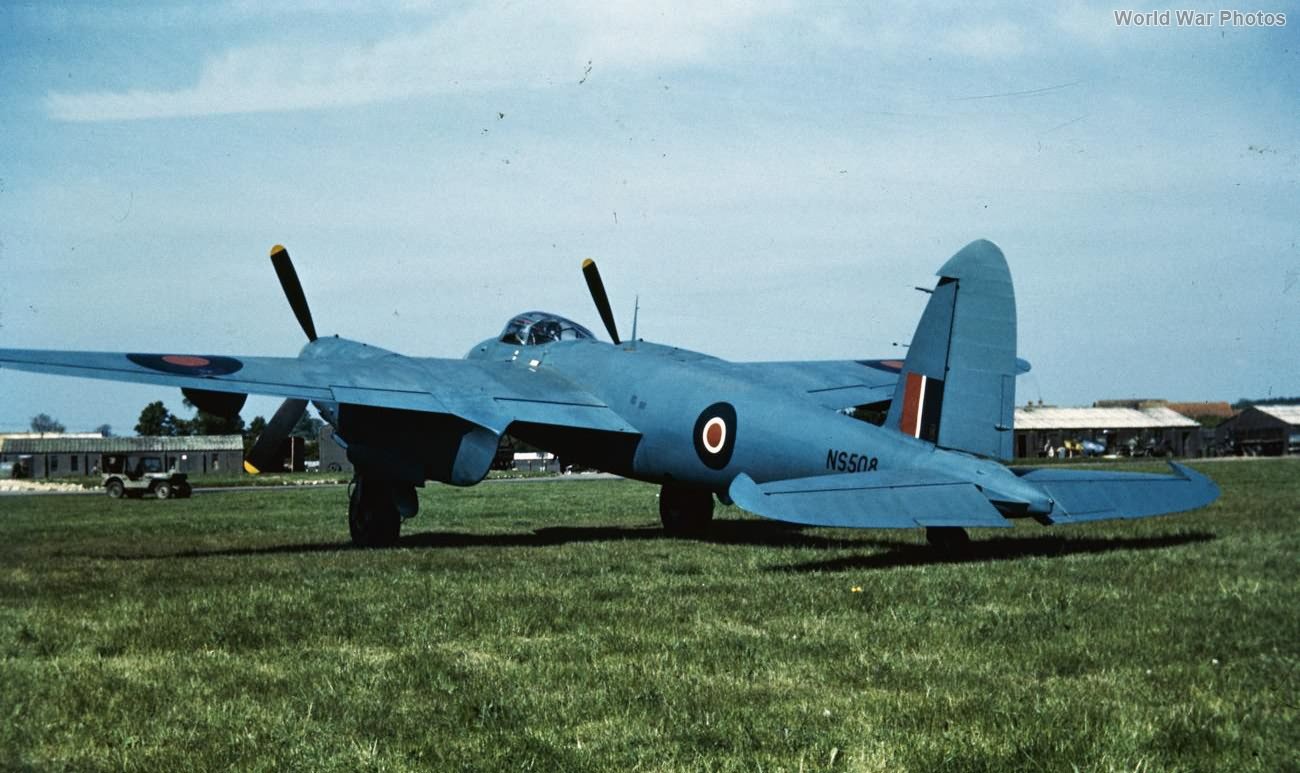The photo-reconnaissance (PR) versions of the Mosquito underwent various paint schemes and markings changes throughout their service life, adapting to different theaters of operation and tactical needs.
Early PR Schemes:
- The prototype PR Mosquito (W4051) started with a Dark Earth and Dark Green over Sky camouflage, typical of the RAF’s early schemes, with B Type roundels on the upper wings, a 36″ A1 roundel on the fuselage, and a C Type fin flash (27″ high).
- Later, it and subsequent PR Mk Is were repainted in the standard PRU Blue overall, as used by No. 1 PRU. The fuselage carried LY codes in Medium Sea Grey with the B Type roundels on the upper wings and C1 Type (24″) roundels on the fuselage sides, accompanied by the C1 Type fin flash.
PR Mk IX and Later Changes:
- As the PR Mk IX came into service, the fuselage roundel was changed to a 36″ B Type. Squadron codes were rarely applied, but occasionally, an 8″ letter in Medium Sea Grey was placed forward of the fuselage roundel, or a black 8″ letter was seen below the serial number.
- During the D-Day invasion, PR Mosquitoes carried invasion stripes, though their application often varied. Stripes were placed around or even over the roundels and serial numbers, leading to many different configurations.
Variations in Operational Theaters:
By mid-1944, the PR Mosquitoes of No. 680 Squadron in Italy faced confusion with Allied pilots who mistook them for enemy aircraft like the Me 210/410. To prevent misidentification, these aircraft had the entire vertical fin painted in red and white diagonal stripes. The spinners were painted yellow, and the propeller blades had yellow bands about 6″ wide placed approximately 8″ from the tips. Serial numbers were positioned around the invasion stripes and aircraft numbers were in red (24″) outlined in black aft of the fuselage roundels.
In SEAC (South East Asia Command) operations, the PR Mosquitoes were initially painted PRU Blue, but the intense heat of the theater caused a switch to an overall dull aluminium color. These aircraft carried SEAC roundels and the wide black recognition bands common in the theater, applied to the wings, tailplane, and rudder. However, variations existed, and sometimes the recognition bands did not extend over control surfaces. Serial numbers (black, 8″) were carried high on the fuselage, and individual aircraft letters were placed aft of the fuselage roundels.
Post-War Service:
- Post-war, some PR Mosquitoes in No. 60 Squadron (RSAAF) retained their overall aluminium scheme but with black anti-dazzle paint on the upper and inner engine cowls and a gloss white section on the upper back of the cockpit canopy, including the glazing and frames.
- Other Mosquitoes operating in Egypt had an unusual silver upper surface with PR Blue undersides, with a demarcation line running from the centerline of the tailplane to the wing trailing edge.
- Post-war roundels changed to the brighter D Type, with 54″ roundels on the upper wing and 36″ roundels on the fuselage sides. Serial numbers (black, 8″) remained standard, with 30″ serials applied under the wings as seen on post-war bombers and target tugs.
Rare Variations:
- Some PR Mk 34A series Mosquitoes were observed with white or Medium Sea Grey upper surfaces, though this was uncommon.
- Post-war codes on PR types were usually applied in white and were 36″ high, with some units displaying unit badges on either side of the vertical fin, a practice carried over from bomber squadrons.
